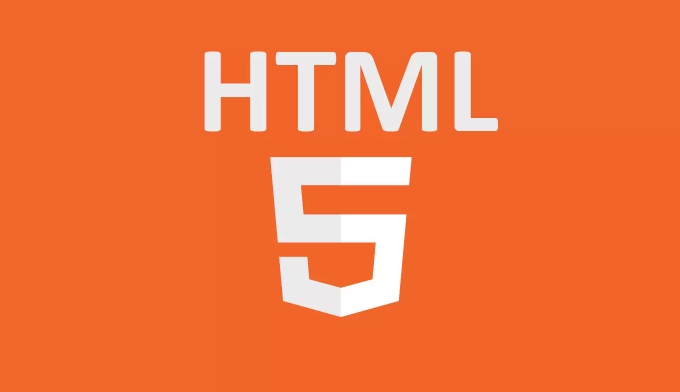 Web Front-end
Web Front-end
 H5 Tutorial
H5 Tutorial
 How to access user's current location with the HTML5 Geolocation API?
How to access user's current location with the HTML5 Geolocation API?
How to access user's current location with the HTML5 Geolocation API?
Jul 13, 2025 am 02:23 AMTo get the user's current location, use the HTML5 Geolocation API. This API provides information such as latitude and longitude after user authorization. The core method is getCurrentPosition(), which requires successful and error callbacks to be handled; at the same time, pay attention to the HTTPS prerequisite, user authorization mechanism and error code processing. ① Call getCurrentPosition to get the position once, and an error callback is triggered if it fails; ② The user must authorize it, otherwise it cannot be obtained and may no longer be prompted; ③ Error processing should distinguish between rejection, timeout, location unavailable, etc.; ④ Enable high-precision, set timeout time, etc., and can be configured through the third parameter; ⑤ The online environment must use HTTPS, otherwise it may be restricted by the browser.

To get the user's current location, HTML5 provides the Geolocation API, which is a very practical browser interface. It allows web pages to obtain their geographical location information, such as latitude and longitude, under the premise of user authorization. It is not complicated to use, but there are several key points to pay attention to.

Basic usage: call navigator.geolocation.getCurrentPosition
The core method is getCurrentPosition() , which will try to get the user's current one-time location data.
if (navigator.geolocation) {
navigator.geolocation.getCurrentPosition(
(position) => {
console.log("latitude:" position.coords.latitude);
console.log("longitude:" position.coords.longitude);
},
(error) => {
console.error("Cannot get location", error);
}
);
} else {
console.log("The browser does not support geolocation");
} This code first checks whether the browser supports the Geolocation API, then calls the getCurrentPosition method, and passes in two callback functions: one handles the successfully obtained location information, and the other handles possible errors.

Note: This method will not continuously track the location by default. If you need to listen for position changes, use
watchPosition().
User authorization mechanism: License must be obtained
A key point in the Geolocation API is user authorization . When a website requests a location for the first time, the browser will usually pop up a prompt box asking the user whether to allow the shared location.

- If the user refuses, the second callback function (Error handler) will be triggered.
- If the user allows, the first callback function (success handler) is called.
- Users can also choose "No more inquiry", and they will no longer be able to obtain authorization prompts in the future unless they manually change the browser settings.
Therefore, in actual development, you should pay attention to:
- Give clear tips to tell users why they need location permissions;
- Check whether the user has refused authorization;
- For mobile applications, consider providing a guide to jump to system settings.
Error handling: Don't ignore failure situations
Getting a location is not always successful, and common reasons for failure include:
- User refuses authorization;
- Positioning services are not available;
- time out;
- HTTPS is not supported (most modern browsers require HTTPS to enable Geolocation);
Therefore, when calling getCurrentPosition , you must pass in the error handling function and give corresponding feedback based on different error codes.
For example:
function showError(error) {
switch(error.code) {
case error.PERMISSION_DENIED:
console.log("The user rejected the location request");
break;
case error.POSITION_UNAVAILABLE:
console.log("Location information is not available");
break;
case error.TIMEOUT:
console.log("Request timeout");
break;
default:
console.log("Unknown Error");
}
}You can also control behavior by setting a third parameter, such as setting the maximum timeout time, whether to enable high precision, etc.
{
enableHighAccuracy: true, // Enable high-precision mode (such as GPS)
timeout: 5000, // Maximum time of waiting position maximumAge: 0 // No cache position}Tips: HTTPS is the basic premise
Most modern browsers require your website to use HTTPS to access the Geolocation API. If you are testing locally (such as localhost ), it is usually OK, but when deploying to an online environment, remember to configure the SSL certificate.
Additionally, some browsers (such as Chrome) are increasingly restricting non-secure contexts, so make sure you are using the HTTPS protocol, otherwise you may encounter silent failure or silent problems.
Basically that's it. As long as you pay attention to the authorization process, error handling and protocol requirements, you can successfully use the HTML5 Geolocation API to obtain the user location.
The above is the detailed content of How to access user's current location with the HTML5 Geolocation API?. For more information, please follow other related articles on the PHP Chinese website!

Hot AI Tools

Undress AI Tool
Undress images for free

Undresser.AI Undress
AI-powered app for creating realistic nude photos

AI Clothes Remover
Online AI tool for removing clothes from photos.

Clothoff.io
AI clothes remover

Video Face Swap
Swap faces in any video effortlessly with our completely free AI face swap tool!

Hot Article

Hot Tools

Notepad++7.3.1
Easy-to-use and free code editor

SublimeText3 Chinese version
Chinese version, very easy to use

Zend Studio 13.0.1
Powerful PHP integrated development environment

Dreamweaver CS6
Visual web development tools

SublimeText3 Mac version
God-level code editing software (SublimeText3)

Hot Topics
 What Does H5 Refer To? Exploring the Context
Apr 12, 2025 am 12:03 AM
What Does H5 Refer To? Exploring the Context
Apr 12, 2025 am 12:03 AM
H5referstoHTML5,apivotaltechnologyinwebdevelopment.1)HTML5introducesnewelementsandAPIsforrich,dynamicwebapplications.2)Itsupportsmultimediawithoutplugins,enhancinguserexperienceacrossdevices.3)SemanticelementsimprovecontentstructureandSEO.4)H5'srespo
 Is h5 same as HTML5?
Apr 08, 2025 am 12:16 AM
Is h5 same as HTML5?
Apr 08, 2025 am 12:16 AM
"h5" and "HTML5" are the same in most cases, but they may have different meanings in certain specific scenarios. 1. "HTML5" is a W3C-defined standard that contains new tags and APIs. 2. "h5" is usually the abbreviation of HTML5, but in mobile development, it may refer to a framework based on HTML5. Understanding these differences helps to use these terms accurately in your project.
 Is H5 a Shorthand for HTML5? Exploring the Details
Apr 14, 2025 am 12:05 AM
Is H5 a Shorthand for HTML5? Exploring the Details
Apr 14, 2025 am 12:05 AM
H5 is not just the abbreviation of HTML5, it represents a wider modern web development technology ecosystem: 1. H5 includes HTML5, CSS3, JavaScript and related APIs and technologies; 2. It provides a richer, interactive and smooth user experience, and can run seamlessly on multiple devices; 3. Using the H5 technology stack, you can create responsive web pages and complex interactive functions.
 H5 and HTML5: Commonly Used Terms in Web Development
Apr 13, 2025 am 12:01 AM
H5 and HTML5: Commonly Used Terms in Web Development
Apr 13, 2025 am 12:01 AM
H5 and HTML5 refer to the same thing, namely HTML5. HTML5 is the fifth version of HTML, bringing new features such as semantic tags, multimedia support, canvas and graphics, offline storage and local storage, improving the expressiveness and interactivity of web pages.
 Understanding H5 Code: The Fundamentals of HTML5
Apr 17, 2025 am 12:08 AM
Understanding H5 Code: The Fundamentals of HTML5
Apr 17, 2025 am 12:08 AM
HTML5 is a key technology for building modern web pages, providing many new elements and features. 1. HTML5 introduces semantic elements such as, , etc., which enhances web page structure and SEO. 2. Support multimedia elements and embed media without plug-ins. 3. Forms enhance new input types and verification properties, simplifying the verification process. 4. Offer offline and local storage functions to improve web page performance and user experience.
 What does H5 mean?
Apr 04, 2025 am 12:10 AM
What does H5 mean?
Apr 04, 2025 am 12:10 AM
H5 is the abbreviation of HTML5 and is the fifth version of HTML. H5 enhances the structure and semantics of web pages, and introduces new features such as video, audio, canvas drawing and geolocation APIs, making web page development richer and more efficient.
 HTML5: The Standard and its Impact on Web Development
Apr 27, 2025 am 12:12 AM
HTML5: The Standard and its Impact on Web Development
Apr 27, 2025 am 12:12 AM
The core features of HTML5 include semantic tags, multimedia support, offline storage and local storage, and form enhancement. 1. Semantic tags such as, etc. to improve code readability and SEO effect. 2. Simplify multimedia embedding with labels. 3. Offline storage and local storage such as ApplicationCache and LocalStorage support network-free operation and data storage. 4. Form enhancement introduces new input types and verification properties to simplify processing and verification.
 HTML5 and H5: Understanding the Common Usage
Apr 22, 2025 am 12:01 AM
HTML5 and H5: Understanding the Common Usage
Apr 22, 2025 am 12:01 AM
There is no difference between HTML5 and H5, which is the abbreviation of HTML5. 1.HTML5 is the fifth version of HTML, which enhances the multimedia and interactive functions of web pages. 2.H5 is often used to refer to HTML5-based mobile web pages or applications, and is suitable for various mobile devices.





